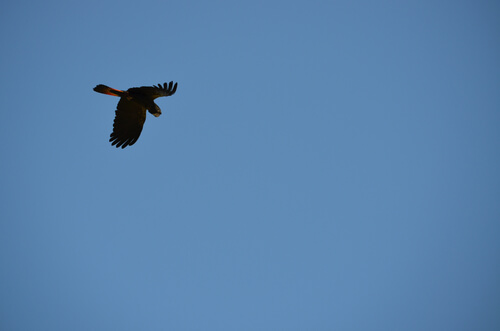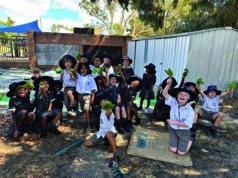The State Government’s claims that its green growth plan would deliver an additional 170,000 hectares of new conservation reserves has been dubbed a ‘scam’ by conservation groups and Shadow Environment Minister Chris Tallentire, who have highlighted its potentially devastating impact on black cockatoos.
The Perth and Peel Green Growth Plan was released in December last year and was touted by the State Government as one of the biggest red tape cuts to the environmental planning approval process ever undertaken in the state.
Included in the announcement were the additional conservation reserves and the improved protection and management of Bush Forever sites.
But Mr Tallentire says no new land would be set aside for endangered species such as the black cockatoo.
“The government is trying to say that 170,000 hectares is going to be added to the conservation estate, now that is a real scam,” he said.
“What’s actually happening is that you have 170,000 hectares that’s already been identified as environmentally significant and all that’s happening is that there’s going to be a change of tenure, which is not an offset at all.
“Back in December when the green growth plan came out the media did let them get away with talking about 170,000 hectares of additional land.
“That was the headline but no one asked them, ‘does this mean there’s more land for black cockatoos’ and the answer is no there isn’t.”
He also criticised the lack of detailed maps initially made available to the public and last month called on the State Government to release additional maps and extend the public consultation period.
Additional maps have been released and the public consultation period was extended to May 13.
Kaarakin Black Cockatoo Conservation Centre volunteer coordinator Cathie Dewhurst also expressed her concern with the plan saying the removal of certain pieces of bushland, including the Gnangara Pine Plantation, would increase pressure on the already struggling black cockatoos.
The plantation is not native to Australia, however certain species of bird such as black cockatoos have adapted it as a food source.
Under the plan the 23,000-hectare plantation would be cleared to preserve the underground water source beneath with 5000 hectares then be replaced.
She said the plantation was already a mature food source that would take 10 years to replicate.

Ms Dewhurst said in the meantime birds were coming in closer to urban areas in search of food and were at an increased risk of car strikes.
The plan was also criticised after a report leaked last month showed up to half the remaining Carnaby’s black cockatoos would be wiped out under the plan.
Conservation Council of WA director Piers Verstegen said it was unacceptable for the State Government to sign off on such a significant decline.
“The government seems to think that it’s acceptable to put forward a plan that would result in half of our cockatoos being starved to death,” he said.
“Various people have already called it the green growth scam or the green growth sham.”
Minister for Environment Albert Jacob defended the government’s handling of the plan and said Mr Tallentire’s claim Labor had forced the release of more detailed maps was ‘laughable’.
“These maps and this strategic plan haven’t been prepared overnight, they have been more than five years in development,” he said.
“Labor had no plan or strategic vision to balance development and conservation and it doesn’t care about actually delivering for the environment, it just wants to score political points.”
Mr Jacob said it had always been the government’s intention to release the detailed mapping, however the compilation of the datasets was more complex than initially anticipated and finalisation of the material took longer than expected.
He has previously said Carnaby’s cockatoos would be better off under the plan and the decline would be greater without it.
A spokeswoman for Mr Jacob said the plan looked 30 years ahead and would provide certainty regarding the protection of Perth and Peel’s unique natural environment and certainty in relation to development required to support growth to 3.5 million people.














